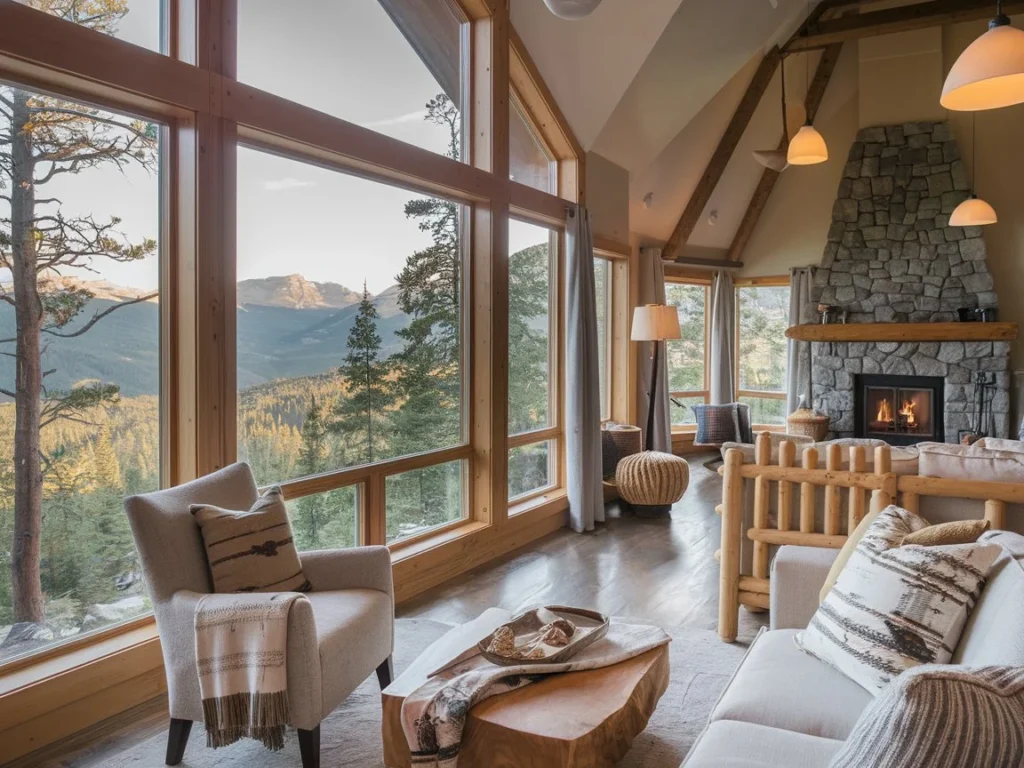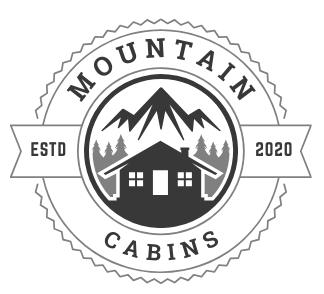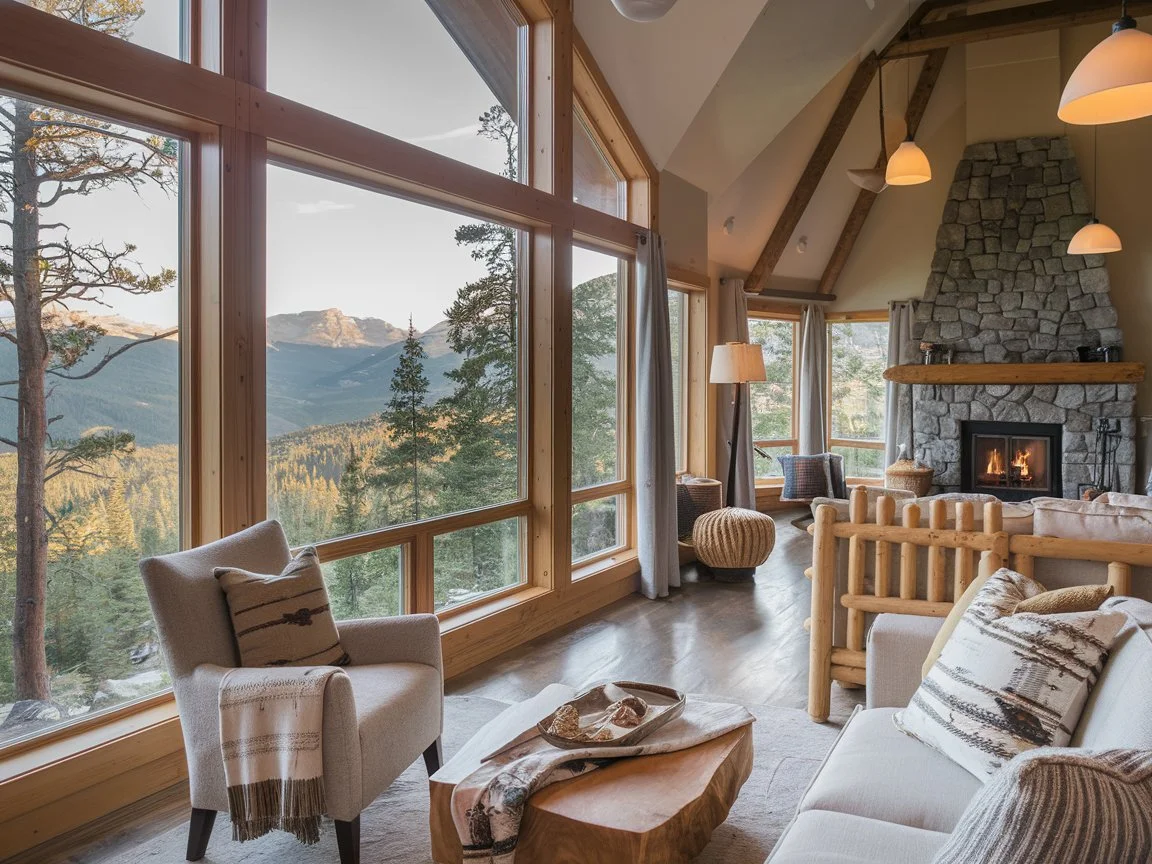
Introduction
Mountain cabin design is all about creating a tranquil retreat where you can escape the fast-paced world, relax, and connect with nature. However, crafting the perfect cabin goes beyond just aesthetics—it requires a thoughtful balance of comfort, functionality, and style. A well-planned mountain cabin design seamlessly integrates with its surroundings while providing modern conveniences, enhancing both practicality and the overall experience.
This guide will explore the key elements of designing the perfect mountain cabin, from architectural choices to interior decor, sustainability considerations, space-saving solutions, and outdoor living enhancements. Whether you prefer a rustic, traditional look or a sleek, contemporary feel, these design ideas will help you create a cozy yet stylish mountain retreat.
Choosing the Right Architecture for a Mountain Cabin
When designing a mountain cabin, the architectural style sets the tone for the entire space. Traditional log cabins exude warmth and rustic charm, while A-frame designs offer a modern twist with their steeply angled roofs that help with snow runoff. Contemporary cabins often feature large windows and open spaces, allowing for breathtaking views and abundant natural light.
Open-plan layouts are ideal for maximizing space and creating a sense of openness. By merging the kitchen, living, and dining areas, a cabin feels more spacious and inviting. High ceilings with exposed beams add character and enhance the aesthetic appeal. Additionally, incorporating loft spaces or mezzanine levels can provide extra sleeping or storage areas without increasing the footprint of the cabin.
Integrating the cabin with its natural surroundings is also crucial. Designing around the landscape—whether nestled among trees or perched on a mountainside—ensures minimal disruption to the environment. Large windows, wraparound decks, and natural materials like wood and stone help the cabin blend harmoniously with its setting. Strategic landscaping with native plants can further enhance the connection between the cabin and nature.
Sustainable and Eco-Friendly Mountain Cabin Design Ideas
Sustainability is a key consideration in modern a Mountain Cabin Design. Using locally sourced, sustainable materials such as reclaimed wood and stone not only reduces the environmental impact but also adds authenticity to the cabin’s aesthetic. Additionally, opting for non-toxic paints and eco-friendly insulation contributes to a healthier indoor environment.
Renewable energy solutions like solar panels can provide off-grid power, while rainwater collection systems help reduce water consumption. Energy-efficient appliances and LED lighting further minimize the cabin’s carbon footprint. Proper insulation and strategic window placement also aid in maintaining a comfortable indoor temperature, reducing the need for excessive heating or cooling.
In addition to these measures, incorporating passive design principles—such as orienting the cabin to capture sunlight during winter while providing shade in the summer—can naturally regulate indoor temperatures. Green roofs and living walls are innovative options that not only improve insulation but also blend the cabin further into its surroundings.
Interior Design: Creating a Cozy and Inviting Atmosphere
The interior design of a mountain cabin should evoke warmth and relaxation. Warm color palettes, including earthy tones like browns, greens, and deep reds, create a welcoming atmosphere. Incorporating natural elements such as wood, stone, and wool adds texture and reinforces the rustic charm.
Comfortable furniture, plush throws, and soft rugs contribute to a cozy ambiance. Layering different textiles—such as wool blankets, faux fur pillows, and knitted cushions—enhances warmth. Fireplaces or wood-burning stoves serve as focal points, providing both heat and a nostalgic charm.
Personal touches, such as handcrafted furniture, vintage decor, and artwork inspired by nature, can add character and uniqueness to the space. Thoughtful placement of mirrors can also help reflect light and create an illusion of more space, making smaller cabins feel larger and more open.
Maximizing Cabin Space: Storage and Organization Tips
Many mountain cabins have limited square footage, making smart storage solutions essential. Built-in shelving, hidden compartments under beds, and foldable furniture maximize functionality without compromising style.
Organizing the kitchen with hanging racks, magnetic knife strips, and pull-out pantries optimizes space. In bedrooms, under-bed storage and wall-mounted nightstands help keep clutter at bay. Vertical storage, such as tall cabinets and wall hooks, makes the most of available space, ensuring every inch of the cabin is utilized efficiently.
Additionally, investing in modular furniture—such as fold-out dining tables or sofas with built-in storage—can add flexibility to cabin living. Using space-saving solutions like sliding doors instead of traditional swinging doors can also make a significant difference in optimizing limited space.
Creating Outdoor Spaces: Patios, Decks, and Firepits
Outdoor spaces play a vital role in extending the living area of a cabin. A well-designed deck or patio provides an inviting space for lounging, dining, and entertaining while allowing residents to enjoy the beauty of nature.
Durable outdoor furniture made from weather-resistant materials like teak or wrought iron ensures longevity. Firepits add warmth and ambiance, making them ideal for gathering around on cool evenings. Integrating large sliding doors or floor-to-ceiling windows creates a seamless transition between indoor and outdoor areas, enhancing the overall experience.
Adding outdoor elements such as hammocks, pergolas, and built-in seating can make the space even more functional. Outdoor kitchens and barbecues offer an excellent way to enjoy meals outside, while strategically placed lighting can highlight the beauty of the landscape and ensure usability even after dark.
Cabin Lighting: Enhancing Mood and Functionality
Lighting plays a crucial role in setting the ambiance of a mountain cabin. Maximizing natural light through strategically placed windows and skylights reduces the need for artificial lighting during the day.
A combination of ambient, task, and accent lighting ensures both functionality and warmth. Soft, warm lighting from pendant lights or sconces enhances the cozy feel, while task lighting in kitchens and reading nooks improves usability. Outdoor lighting, such as pathway lights and lanterns, adds to the cabin’s charm and ensures safety at night.
Candle lanterns, string lights, and dimmable LED fixtures offer versatile lighting solutions that can adapt to different moods. Smart lighting systems can also be incorporated, allowing remote control of brightness levels and energy efficiency optimization.
Conclusion
Designing the perfect mountain cabin involves thoughtful planning and attention to detail. From choosing the right architectural style to incorporating sustainable materials, optimizing interior spaces, and enhancing outdoor areas, every element contributes to creating a comfortable and stylish retreat.
Personalizing the cabin with unique decor and functional design choices allows homeowners to craft a space that reflects their lifestyle and preferences. By blending modern conveniences with rustic charm, a well-designed mountain cabin becomes a sanctuary where relaxation and nature go hand in hand.
Whether for weekend getaways or full-time living, investing in quality design and sustainable practices ensures that your mountain cabin remains a timeless and cherished retreat for years to come.
For more:

